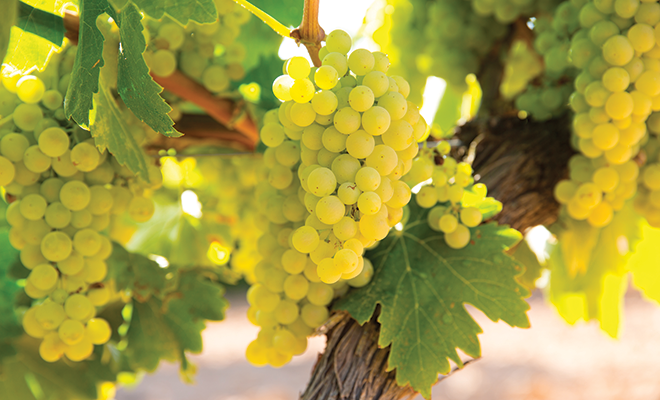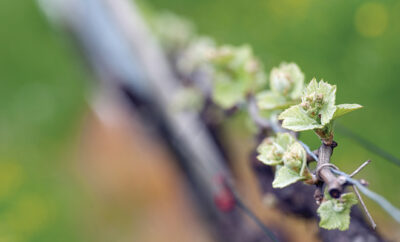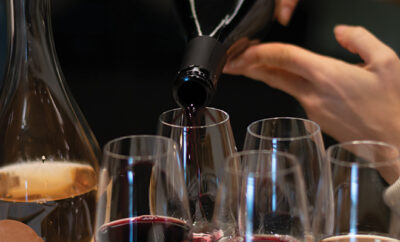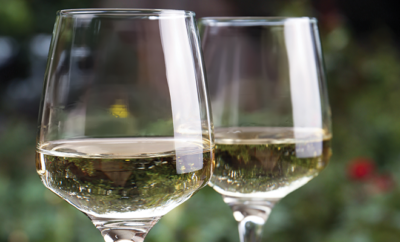
Grape to Glass
The Farm to Fork phenomenon has been a positive platform for food and farm educators; it demonstrates the value and importance of knowing the source of our meals and supporting the local providers of vegetables, fruits, meats, fish and so on.
Grape to Glass takes this concept to local vineyards, highlighting the wine grape’s growth and progression through harvest, crush, press, fermentation and bottling. September could be a salute to the farmer! From farm to pasture to vineyard, it’s all about reaping the rewards of planning, diligence and hard work. Grapevines are the largest fruit crop on earth, requiring a production of more than 700 grapes per wine bottle. Harvest is upon us and the season of change is in the air!
Summer begins to fade this time of year. Temperatures cool and some wine lovers will turn from crisp, sweeter Rieslings, Pinot Grigios and Rose wines and look to the classic Chardonnay for the body and warmth to accompany fall recipes and activities. With 125 calories in 5 ounces, white wine remains on food plans and restaurant wine menus year ’round for its refreshing and well-rounded qualities. Chardonnays of summer will be remembered as the chilled stone fruit, apricot and honeyed beauties on warm days, perfect for poolside barbecues and warm evenings, light on the palate with very little acid. Fall chardonnays have more heft to the palate, spice on the finish and, yes, even that famous, traditionally classic desirability of creaminess, oaky-buttery.
Have you heard the term? I’ll bet you have! It’s a descriptor that’s often thrown around cocktail and dinner parties, inviting conversation about the wine. Even in wineries and grocery stores, wine staff makes note of what kind of oak was used, if any, in the barrel aging process for the chardonnay. It does make a difference. Barrels made of French oak impart flavor into wine differently than American oak or even Hungarian oak. French white oak, for example, comes from various forests in France, with unique nuances of specific forests from which it was harvested. American white oak is generally similar in characteristics, whereas the cooperage reputation for quality is more important to the winemaker. The winemaker will decide what percentage, if any, of the fermented chardonnay wine will sit and age in the barrels. Nine to 15 months on oak makes a lasting imprint on wine versus stainless steel barrels. The wine will actually mature in age with oak barrels, while wine in stainless barrels will “hold,” not aging with oak influence. Fruit from the same vineyard, processed at the same time, will result in very different chardonnays when split between oak versus stainless steel. Wine lovers more sensitive to sulfides, naturally occurring in wine and fermented foods and beverages, might lean more toward un-oaked wines to consume lower levels of sulfides. Nevertheless, sulfide management is very much part of the wine-making process regardless of the use of oak or stainless steel.
Traditionally, the chardonnays that win the hearts of enthusiasts possess a sense of melted butter, popcorn, a creaminess that is actually a byproduct of a natural chemical reaction called malolactic fermentation. “Malo” occurs when malic acid, located in the grape must, turns into the softer lactic acid in the process. This may be experienced as a subtle to strong taste of oak and may linger on the palate. It’s often described as having a buttery smooth toothpick on the tongue. French oak will impart a noticeably earthy aroma, whereas the American oak might render a fresh sawdust sense that affects your enjoyment of a classic wine that may also have a spicy or mineral finish.
Some folks fall into the ABC category, enjoying anything but chardonnay. They will look to other varietals of whites, with so many other options available. Chardonnay has been both the darling, a softer, refined, gentle and more mainstream wine, and the dame, a bold, unique and less popular with the mainstream wine enthusiast, of pairings. This dichotomy is generally due to changing winemaking trends dictating the ostensive use of oak or the increased use of stainless steel. Because each vintage in every region is ever changing, the subsequent wine will also change, but keep trying it. You may find what you consider gold! HLM
Sources: enologyinternational.com, forbes.com, livestrong.com and winepros.org.







